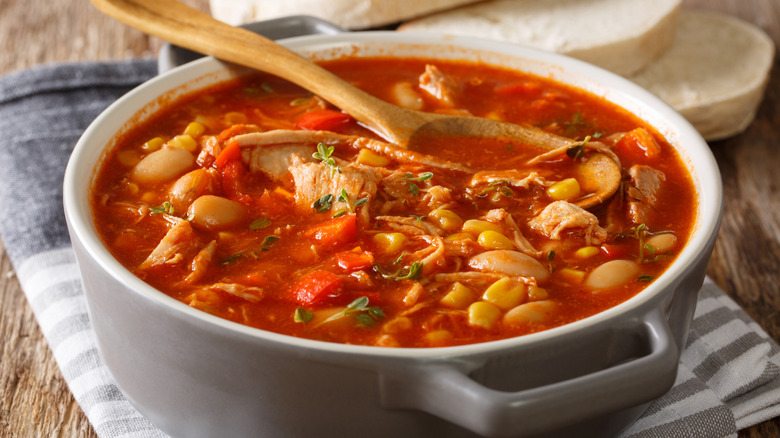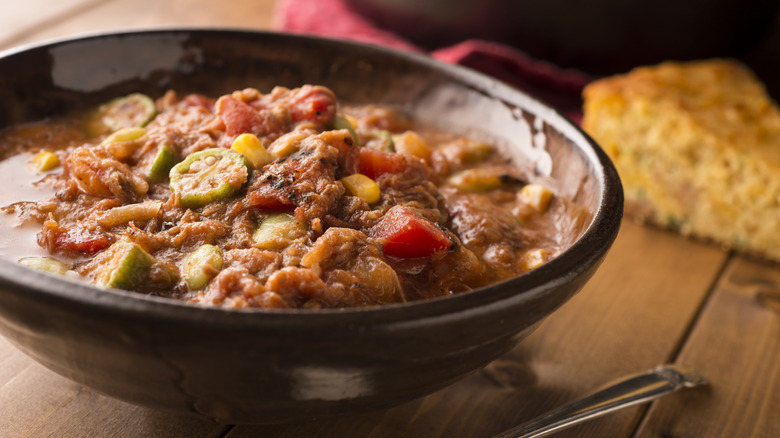Brunswick Stew: The History Behind The Iconic Virginia BBQ Dish
Though this iconic barbecue dish is very popular in Brunswick, Georgia, The Peach State isn't the actual birthplace of Brunswick stew. With nearly two centuries of history and almost as many variations, the story of Brunswick stew begins the same way as many Southern classics: innovation born of necessity.
"Camp stews" — stews created from whatever meat, vegetables, and seasonings were on hand — are likely as old as camps themselves. However, the predecessor of modern Brunswick stew was born in 1828, when Jimmy Matthews, an enslaved camp cook, concocted a mixture of squirrel, stale cornbread, and onions for his enslaver in Brunswick County, Virginia. Before camp stew became a traditional barbecue side dish, it was like many one-pot meals: a blend of Native American, European, and African influences, using whatever ingredients were available to make something palatable.
In 1988, the Virginia General Assembly officially declared Matthews the inventor of Brunswick stew. The state now holds an annual Brunswick Stew Day at its Capitol every January, and the people of Brunswick County even founded the Brunswick Stewmaster's Association in 1998 and the Taste of Brunswick Festival. There's even a Brunswick Stew Trail, with signposts highlighting where to eat the dish and where to find the best ingredients. But like all unbeatable Southern food across the Grits Belt, how you make Brunswick stew depends on where you are.
Variations of Brunswick stew
Modern Brunswick stew is a tomato-based soup full of local vegetables, meat, and even small game like squirrel or rabbit. Since the stew is now so closely tied to barbecue, it has developed dozens of variations incorporating everything from regional American barbecue sauces to bear meat.
For barbecue-based Brunswick stew, look to Georgia's recipes. Starting in the early 20th century, Georgia's version began to include leftover pulled pork, mop sauce, and even meat fresh off the smoker. If, however, you want something closer to Jimmy Matthews' original recipe, stick to the most old-school Virginia stew you can find. Specifically, look for recipes that don't call for searing the meat first, instead simmering it raw in stock or water and only adding vegetables once the meat starts falling off the bone.
When it comes to vegetables, there are no wrong answers. Corn, tomatoes, and lima beans are essential, but sweet potatoes, carrots, and radishes are solid additions as well. Texas styles may even include sweet peppers, while in the Southeast, crumbled cornbread is the go-to topping. Finely chopped potatoes are common fillers, making the stew heartier, but you can also substitute hominy for a similar effect that nods to the stew's Native American roots.


